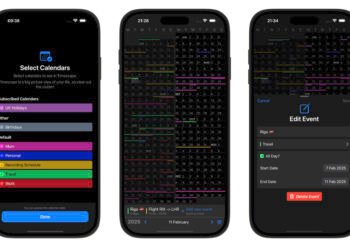PAN-OS Firewall Vulnerability: Immediate Action Required with Released IoCs and Patches
Ensuring robust cybersecurity measures isn’t just a recommendation in today’s digital landscape—it’s an absolute necessity. Recent events have brought a critical vulnerability in Palo Alto Networks’ PAN-OS to light, prompting immediate attention and action. This blog aims to dissect the PAN-OS vulnerability, highlight key Indicators of Compromise (IoCs), and stress the urgency of applying available patches.
Critical Insights on the PAN-OS Vulnerability
Palo Alto Networks’ PAN-OS is renowned for its solid firewall capabilities, widely deployed in various enterprises for enhanced security. However, as is the case with all complex software systems, vulnerabilities can emerge, drawing the attention of malicious actors. The current vulnerability is of particular concern due to the severe risk it poses, enticing cybercriminals who exploit any available opportunity.
Understanding the Threat Landscape
The spotlighted vulnerability in PAN-OS threatens to compromise network security by enabling unauthorized code execution. Once compromised, cyber attackers can seize full control of the affected systems, paving the way for data breaches, unauthorized access, and network disruptions. This emerging threat demands immediate responsiveness from organizations leveraging PAN-OS.
Recognizing Indicators of Compromise
Effective risk mitigation begins with identifying potential signs of exploitation. IoCs serve as crucial digital fingerprints that alert security teams about unauthorized access or malicious actions. Here are some key IoCs to monitor:
–
–
–
Security teams must maintain vigilant monitoring for these IoCs to proactively address potential threats.
Timely Patch Deployment is Crucial
Fortunately, Palo Alto Networks has released a patch to rectify this vulnerability. Applying this update ranks as the most effective measure to protect against possible system compromises. Here’s why immediate patch deployment is vital:
–
–
–
Organizations should prioritize patch management and ensure systems are promptly updated with the latest security patches.
Comprehensive Cybersecurity: Beyond Patching
Though patching addresses immediate risks, maintaining a strong cybersecurity framework requires ongoing efforts. Here are some best practices to fortify your network security:
Regular Updates
Ensure continuous updates to software, systems, and firewalls to shield against emerging vulnerabilities. Regular software updates secure critical infrastructure by patching security loopholes.
Vigilant System Monitoring
Consistent monitoring of systems and network traffic is paramount for identifying unusual activities that could indicate an intrusion. This proactive approach enables early detection and swift response to potential threats.
Cybersecurity Awareness and Education
Educating employees about cybersecurity threats equips them to act as a first line of defense. When teams recognize warning signs or suspicious activities, they can report them promptly, minimizing potential harm.
Incident Response Preparedness
A well-structured and rehearsed incident response plan is essential for managing and mitigating damages during cyberattacks. Regularly review and update your response strategy to ensure its effectiveness.
Empowering Security: A Concluding Note
The dynamic realm of cybersecurity demands constant vigilance and an anticipatory approach to new threats. The PAN-OS vulnerability serves as a stark reminder for security professionals and organizations alike to fortify defenses and remain primed for emerging challenges. By keeping abreast of current threats, implementing timely patches, and adopting strategic preventative measures, we can safeguard our digital environments against persistent cyber threats.
Stay informed, safeguard your systems, and collaborate towards a more secure technological future. While the battle against cybercrime is relentless, our collective efforts can stride towards enhanced protection. 🌐🔒




















































